July 9th, 2011
In the Dominican Republic they are called Mamoncillos, But, in Puerto Rico they are called Quenepas
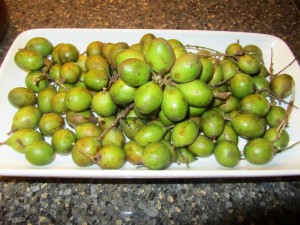
It is a typical summer day in Florida; rain and more rain. But guess what? I went to Publix, the local supermarket. Strolling around the different isles, thinking how nice the snow birds are gone. I don’t consider myself a snowbird. I come to Delray a few days here or there, at the most 10 days at a time.
Something caught my attention at the produce stand; green bunches. I wondered if they were quenepas. I have not had that fruit in probably 30 plus years. It said they were mamoncillos from the Dominican Republic. I had forgotten that was one of the other names given to this tropical fruit. I took some and had to open one right then and there. I was not mistaken; the taste of this fruit brought me back to my years growing up in the Island of Puerto Rico. The street vendors used to sell them in paper bags. Fear had been instilled in all of us children because the fruit is, actually, very slippery. Definitely not for unsupervised kids.
Quenepas are also called Spanish limes. They might look like a small lime but that’s where the similarities stop. It is a tropical fruit of South and Central America, Mexico, the Caribbean and some parts of Africa and the Pacific.
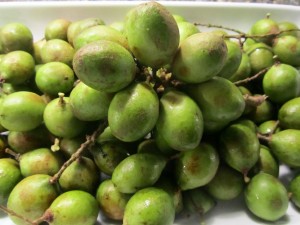
Quenepas grow in bunches. Summer is their season. In Puerto Rico, the quenepas are from the town of Ponce. I think my cousins, who lived in Ponce had a tree in their backyard. Maybe if they read this post they will confirm it.
In describing the fruit, I think the best I can come up with is, that it is a cross between a lychee and a lime; maybe. It has a good layer of skin. The way to eat it? Just crack it with your teeth then put it in your mouth and suck around the large seed. Sorry, but that’s how you do it.
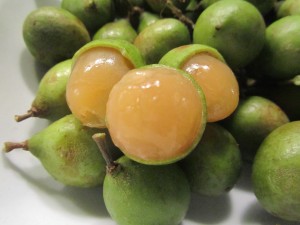
The pulp can be tart, tangy and usually, so deliciously sweet.
Quenepas stain. It is a brown, ugly stain, so watch it.
Another interesting fact about quenepas is that they are used to make Bili, which is a drink that ferments rum, preferably pitorro (Puerto Rican moonshine). Bili is indigenous to the islands of Vieques and Culebra. Both of these islands are located between Puerto Rico and the U.S. Virgin Islands.
Back on April 13, 2010 I wrote a post about this drink and a few others. If you would like to see it, just click on the month of April, 2010 and scroll down to the 13th.
Still enjoying the quenepas as I write this post….waiting from my brother, Miguel….we will see if he is surprised, or not….or does not care at all….talk to you later….have a good one!!
Update: Miguel just arrived bearing from his yard the most amazing mangoes, which are the next best thing to quenepas. He screamed when he saw the quenepas; many years have passed since he had seen them, as well.
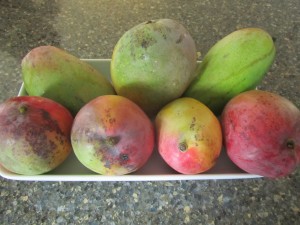

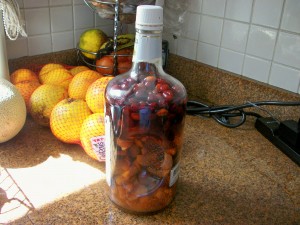
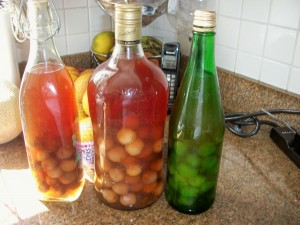
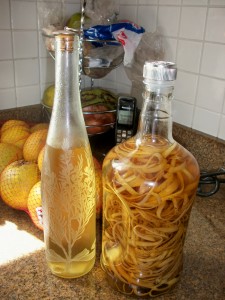


1 Comment